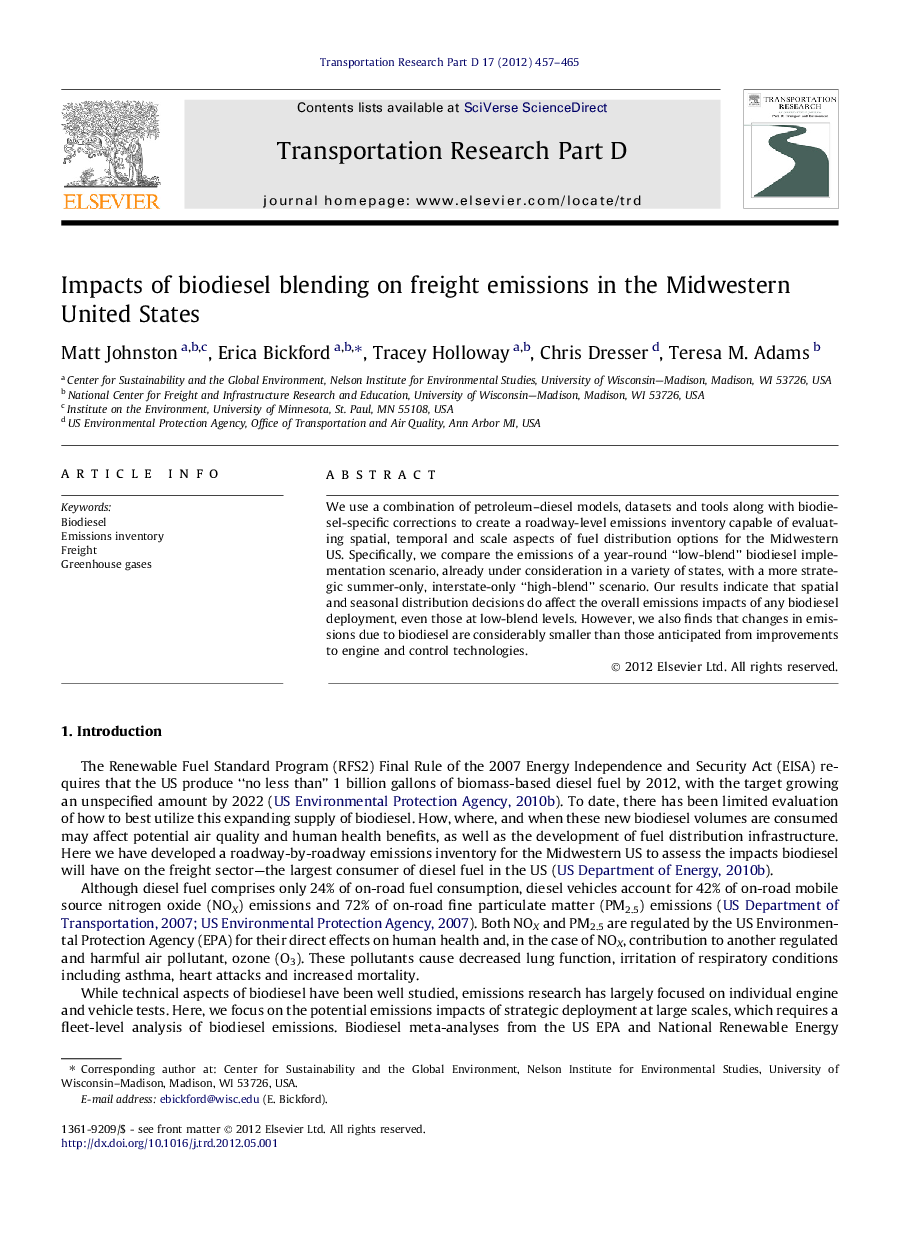| Article ID | Journal | Published Year | Pages | File Type |
|---|---|---|---|---|
| 1066068 | Transportation Research Part D: Transport and Environment | 2012 | 9 Pages |
We use a combination of petroleum–diesel models, datasets and tools along with biodiesel-specific corrections to create a roadway-level emissions inventory capable of evaluating spatial, temporal and scale aspects of fuel distribution options for the Midwestern US. Specifically, we compare the emissions of a year-round “low-blend” biodiesel implementation scenario, already under consideration in a variety of states, with a more strategic summer-only, interstate-only “high-blend” scenario. Our results indicate that spatial and seasonal distribution decisions do affect the overall emissions impacts of any biodiesel deployment, even those at low-blend levels. However, we also finds that changes in emissions due to biodiesel are considerably smaller than those anticipated from improvements to engine and control technologies.
► A roadway-by-roadway Midwest freight emissions inventory is created. ► Emission impacts of deploying low- and high-blend biodiesel were quantified. ► Results show spatial and seasonal distribution of biodiesel affects emission impacts. ► Emission impacts of biodiesel are small compared to engine and control technologies.
